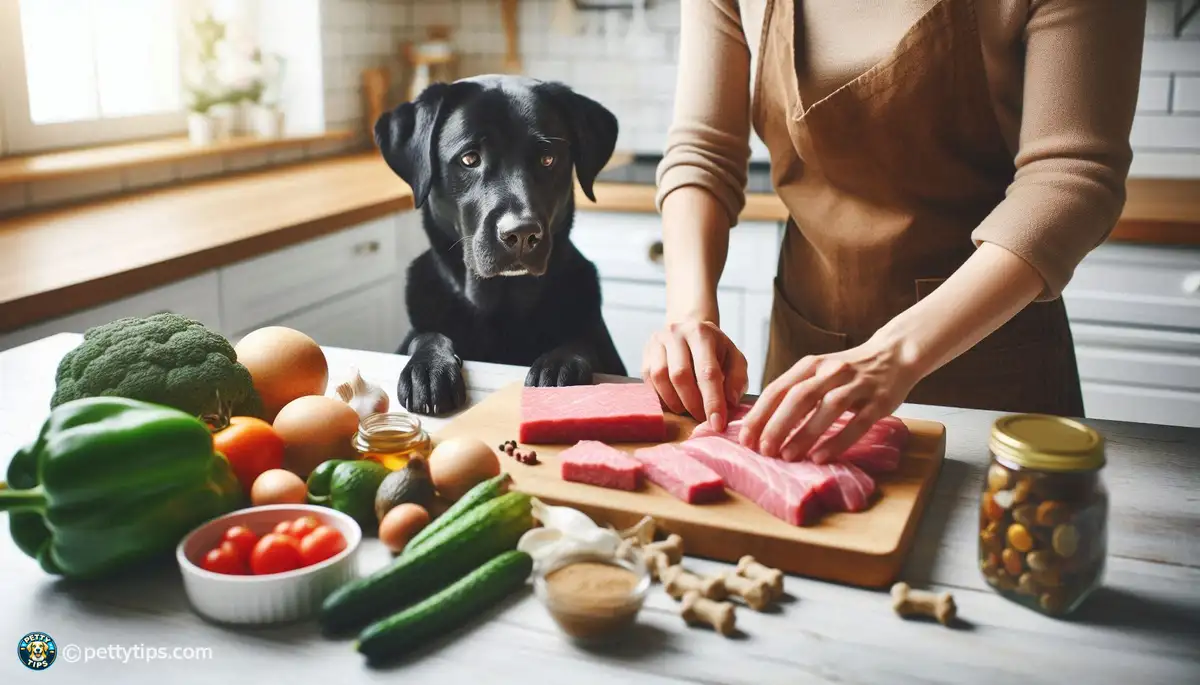- Home
- Pet Nutrition
- Transitioning Your Pet to a Raw Food Diet: What You Need to Know
Transitioning Your Pet to a Raw Food Diet: What You Need to Know

What is a Raw Food Diet?
A raw food diet for pets, often referred to as a BARF (Biologically Appropriate Raw Food) diet, is a feeding regimen that consists of uncooked ingredients such as meat, bones, fruits, and vegetables. This diet aims to mimic what animals would eat in the wild, providing them with a nutritionally balanced and species-appropriate diet.
Benefits of a Raw Food Diet
Many pet owners opt for a raw food diet for its numerous potential benefits. Advocates claim that it can lead to shinier coats, healthier skin, improved digestion, increased energy levels, and even better dental health. Additionally, some pets with food sensitivities or allergies may experience relief when transitioning to a raw diet.
Preparing for the Transition
Consult with Your Veterinarian
Before making any changes to your pet's diet, it's crucial to consult with your veterinarian. They can assess your pet's current health status and provide personalized recommendations based on factors such as age, breed, and any existing medical conditions. Your vet can also help you determine if a raw food diet is the right choice for your pet.
Research and Education
Transitioning your pet to a raw food diet requires careful research and education on your part. Take the time to learn about the nutritional needs of your pet's species, as well as the appropriate proportions of meat, bones, and organs in their diet. Look for reputable sources of information, such as books, websites, and experienced raw feeding communities, to guide you through the process.
Transitioning Your Pet
Start Slowly
Transitioning your pet to a raw food diet should be done gradually to minimize digestive upset. Begin by incorporating small amounts of raw food into their meals while gradually reducing the portion of their current diet. Monitor your pet closely for any signs of gastrointestinal discomfort, such as vomiting or diarrhea, and adjust the transition pace accordingly.
Experiment with Different Ingredients
Every pet is unique, and their dietary needs may vary. As you transition your pet to a raw food diet, don't be afraid to experiment with different ingredients to find what works best for them. Some pets may prefer certain types of meat or organs over others, so be open to adjusting their diet accordingly.
Ensuring Nutritional Balance
Variety is Key
One of the most important aspects of a raw food diet is ensuring nutritional balance through variety. Aim to offer a diverse range of protein sources, including poultry, beef, lamb, and fish, as well as different types of organs and bones. Additionally, incorporate a variety of fruits and vegetables to provide essential vitamins, minerals, and antioxidants.
Consider Supplements
While a well-balanced raw food diet can provide most of the nutrients your pet needs, some owners choose to supplement their pet's diet to ensure complete nutrition. Common supplements for raw-fed pets include fish oil for omega-3 fatty acids, calcium for bone health, and probiotics for gut health. Consult with your veterinarian to determine if supplements are necessary for your pet.
Monitoring Your Pet's Health
Regular Veterinary Check-ups
Even with careful planning and preparation, it's essential to monitor your pet's health closely after transitioning to a raw food diet. Schedule regular veterinary check-ups to assess their overall health and address any concerns or questions you may have about their diet. Your vet can also perform blood tests to ensure that your pet is receiving adequate nutrition.
Watch for Signs of Imbalance
As you continue to feed your pet a raw food diet, watch for any signs of nutritional imbalance or deficiency. These may include dull coat, weight loss, lethargy, or changes in behavior. If you notice any of these symptoms, consult with your veterinarian to adjust your pet's diet accordingly and address any underlying health issues.
Conclusion
Transitioning your pet to a raw food diet can be a rewarding experience, but it requires careful planning, preparation, and monitoring. By understanding the principles of a raw food diet, consulting with your veterinarian, and gradually transitioning your pet, you can help ensure a smooth and successful transition. Remember to prioritize nutritional balance, monitor your pet's health closely, and seek guidance from your veterinarian as needed throughout the process. With dedication and patience, you can provide your pet with a diet that supports their health and well-being for years to come.
